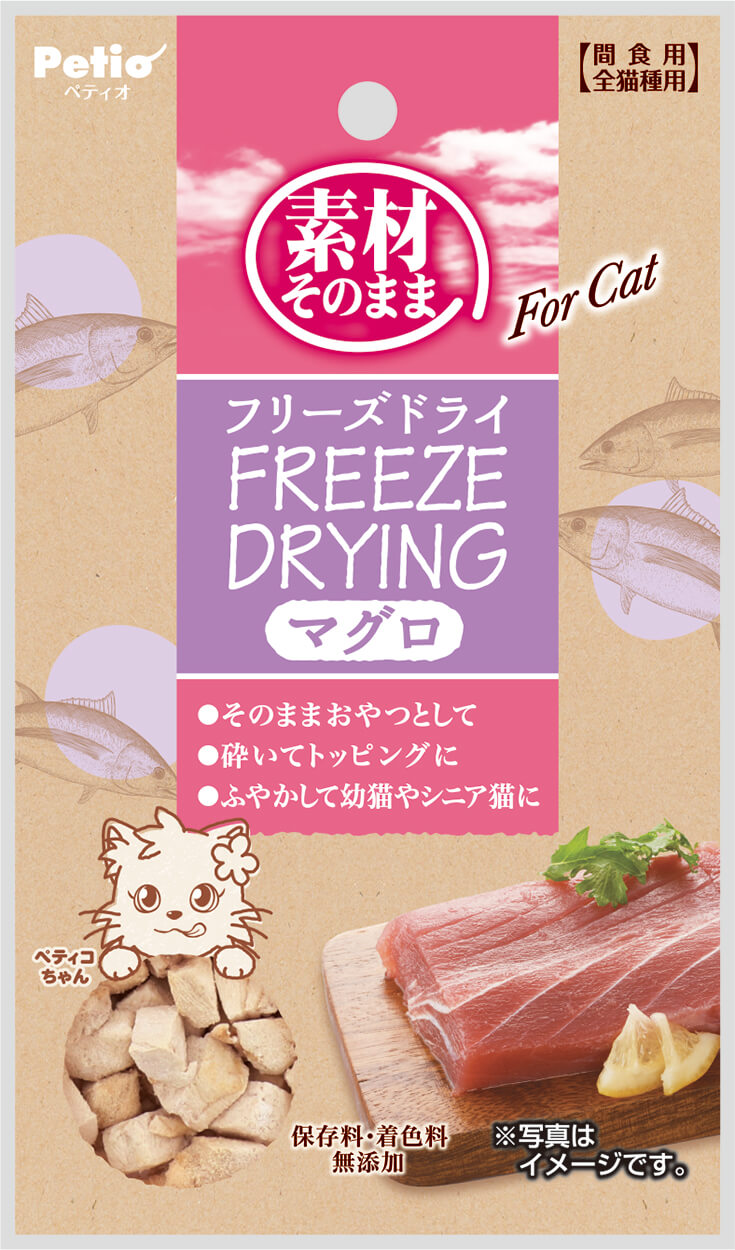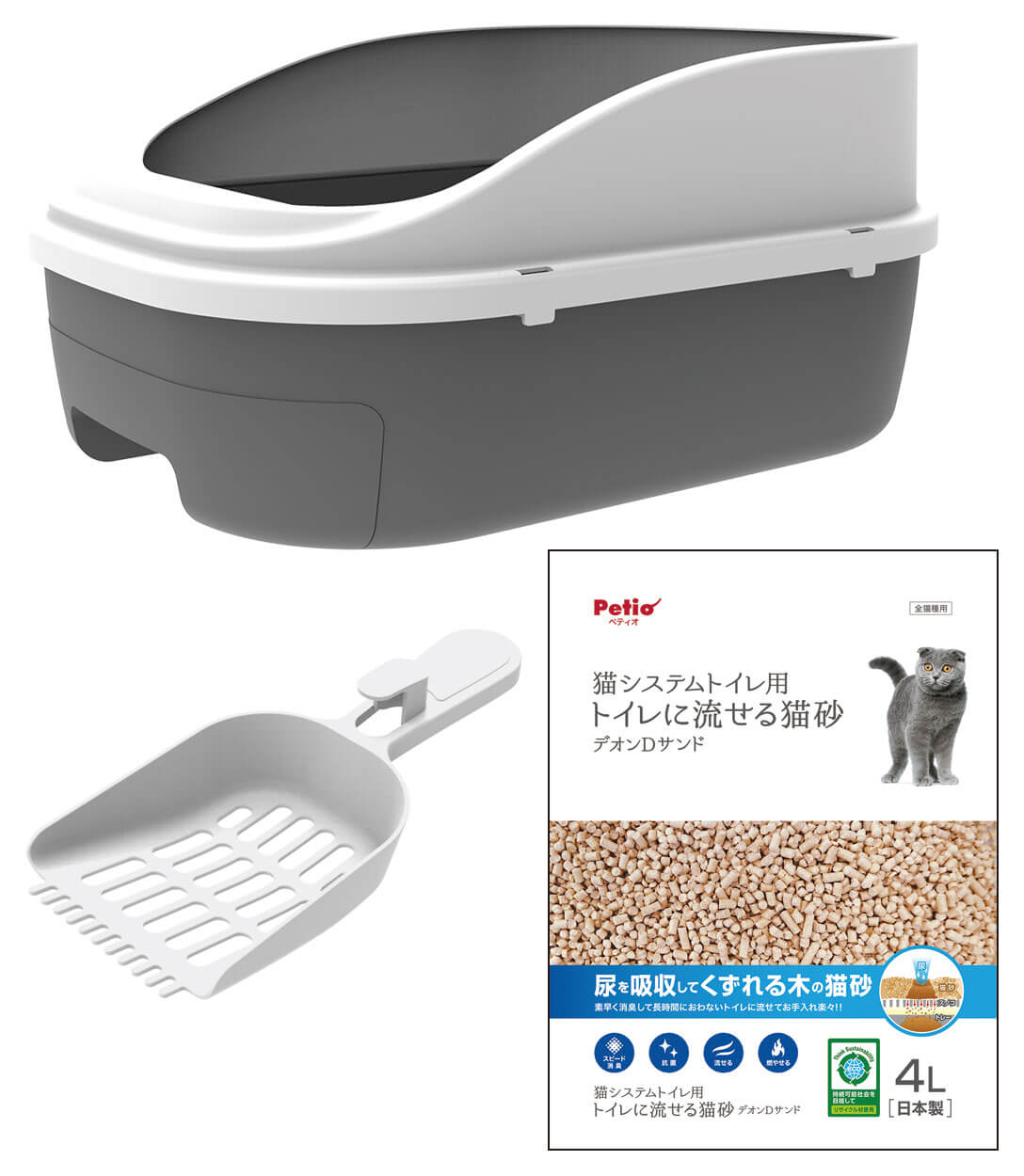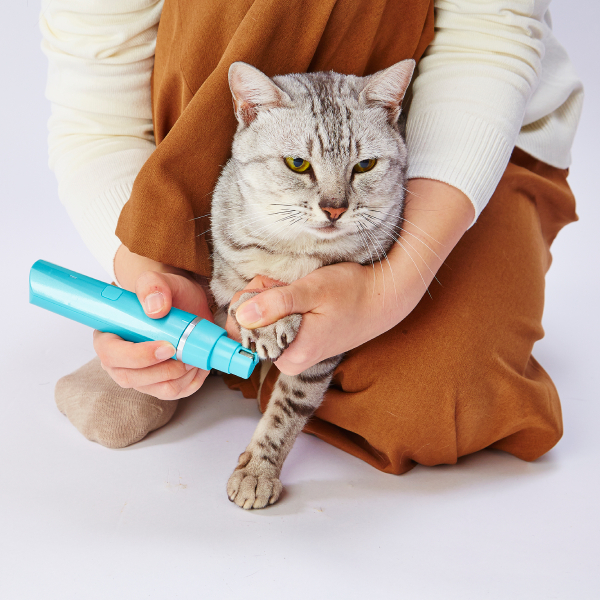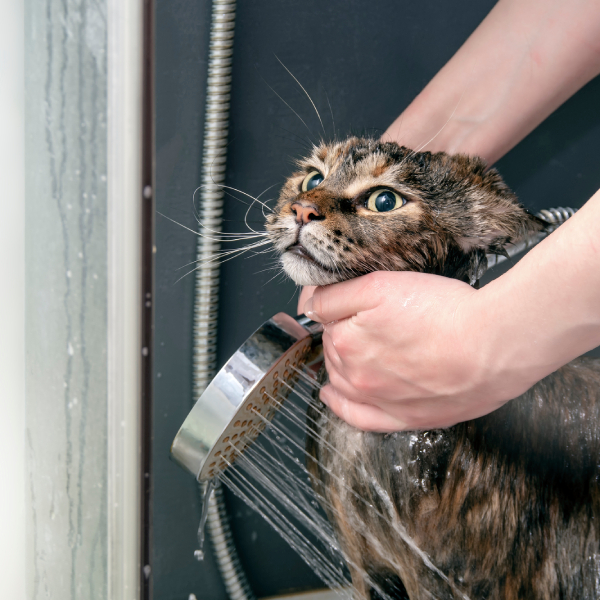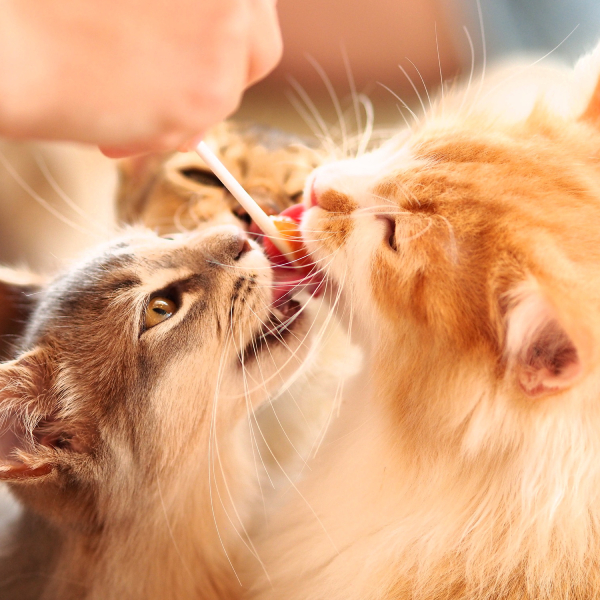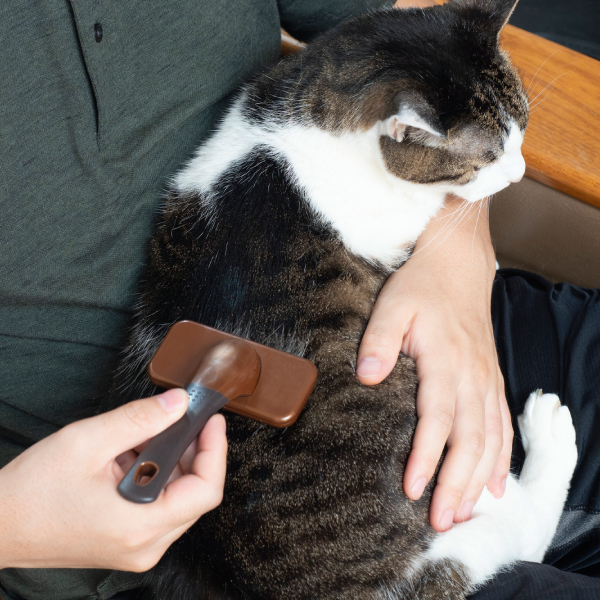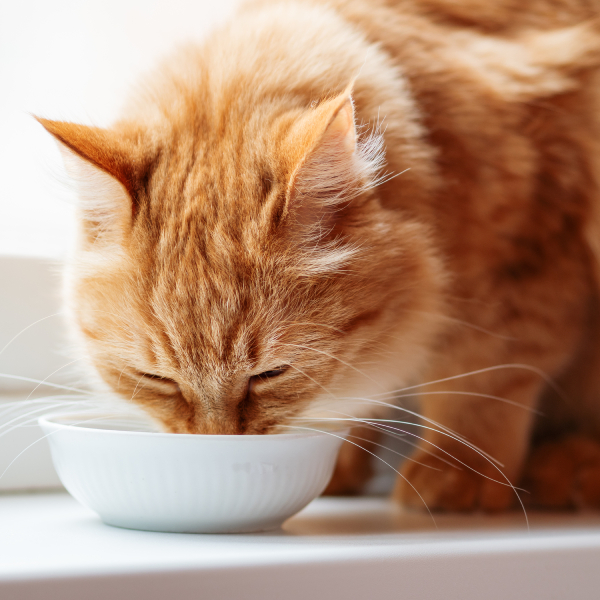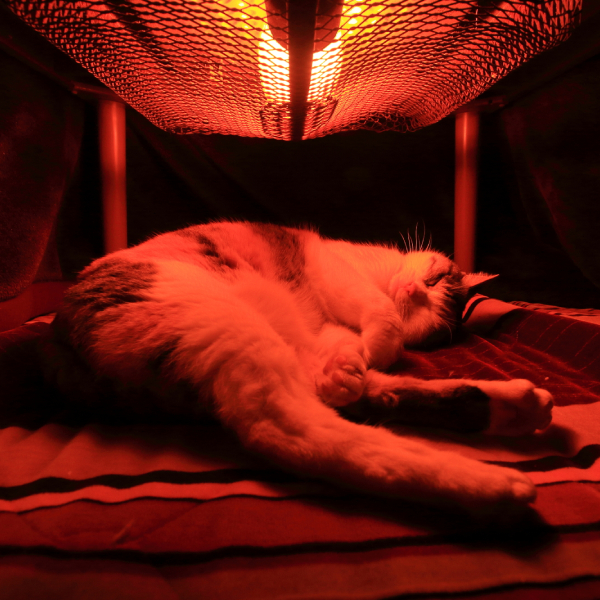特集/Pickup
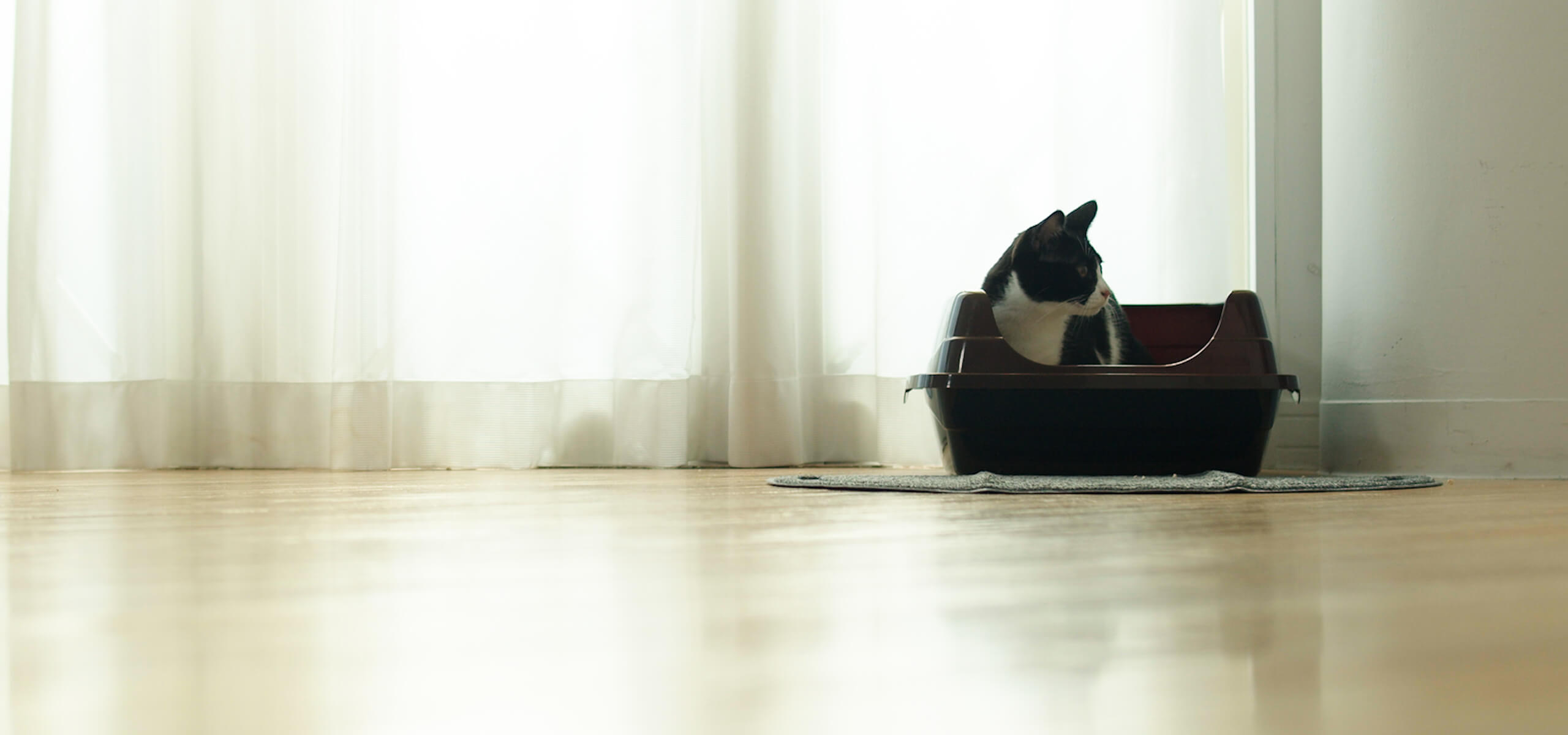
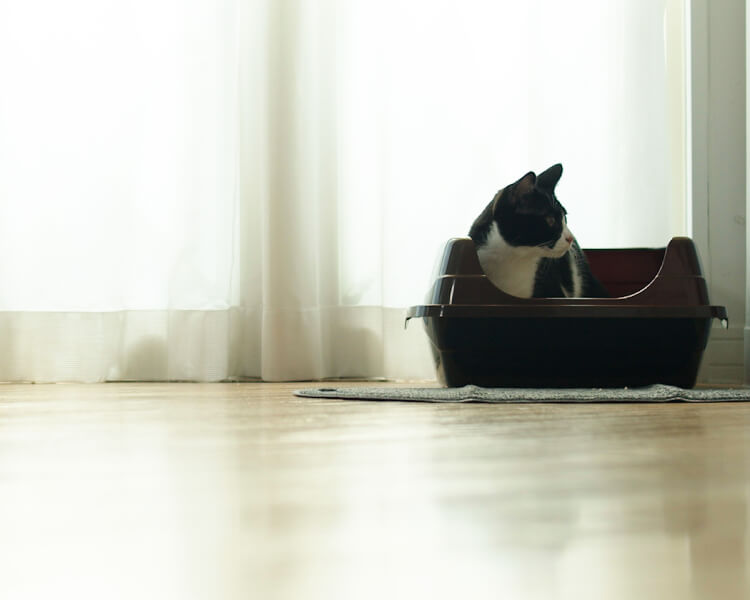
ここでは、子猫の健康のためにも、子猫と飼い主さんが互いにストレスなく暮らすためにも大切な、トイレのしつけ方と環境づくりについて解説します。(最終更新日2024年2月6日)

監修
静岡県島田市向谷3-918-9
TEL 0547-33-6010
北里大学獣医学部獣医学科卒業。専門学校ルネサンス・ペット・アカデミー非常勤講師、日本ペットマッサージ協会とペット薬膳国際協会の講師を務める。東日本大震災における被災動物レスキュー活動などにも参加。一般的な西洋医療のほか、鍼灸治療や漢方、ペットマッサージなどを通して動物の健康に取り組む。
1【まずは動画で解説!】獣医が教える!子猫のトイレのしつけ方
子猫のトイレのしつけはどのように行うのがよいのでしょうか。
手順や押さえておくべきポイントなどを動画にまとめましたので、まずはこちらをご覧ください。
2子猫のトイレのしつけや環境づくりはなぜ必要?
小さな子猫をお迎えするのはうれしいことですが、ストレスなくすこやかに育てるためには、良い環境づくりや最低限のルールをしつけることが必要です。中でも、トイレのしつけは重要なもの。なぜ、子猫のトイレトレーニングやトイレ環境を整えてあげるのが大切なのでしょうか。その理由をご説明します。
猫がおしっこを我慢してしまうと、泌尿器系の病気になってしまう可能性がある
トイレトレーニングがうまくいかなかったり、良い環境が作れなかったりして猫がおしっこを我慢してしまうと、病気にかかるリスクが高まります。おしっこが適切に出ないことで細菌に感染してしまったり、おしっこの濃度が濃くなって尿路感染症や尿石症、膀胱炎といった泌尿器系の病気になってしまったりします。トイレに行く頻度がぐっと減ってしまうと腎臓への負担も大きくなるため、注意してあげなければいけません。
子猫が安心して排泄できる環境でない場合、トイレの外で粗相をしてしまうことがある
もしも、子猫にとってトイレ周りが安心して排泄できる環境になっていないと、トイレ以外の場所で粗相をしてしまうことがあります。人の通りが多い、大きな音がする電化製品がある、多頭飼いで猫が複数いるなど、子猫が落ち着けない要因はさまざまです。一つひとつ解決して、安心できる環境を整えてあげましょう。
このように、猫が健康状態を保って暮らしていくためには、トイレのしつけと良い環境づくりは必要不可欠です。特に、初めてトイレの仕方を覚える子猫に対しては、細心の注意を払うようにしてください。
3子猫にトイレのしつけをスタートする時期
生まれてすぐの子猫は、自発的に排泄をすることができません。赤ちゃんの頃は、お母さん猫がお尻を刺激してあげて排泄を促します。お母さん猫がいない場合は、飼い主さんがティッシュなどで刺激してあげるのもいいです。
子猫が自分で排泄ができるようになるのは、生後3~4週間後くらいの時期となります。この頃からトイレのしつけをスタートするのがいいでしょう。
4子猫のトイレのしつけ方
子猫のトイレのしつけについて、具体的にどのように行えば良いのでしょうか。順を追って解説していきます。

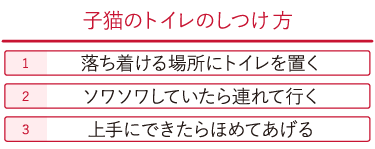
1. 落ち着ける場所にトイレを置く
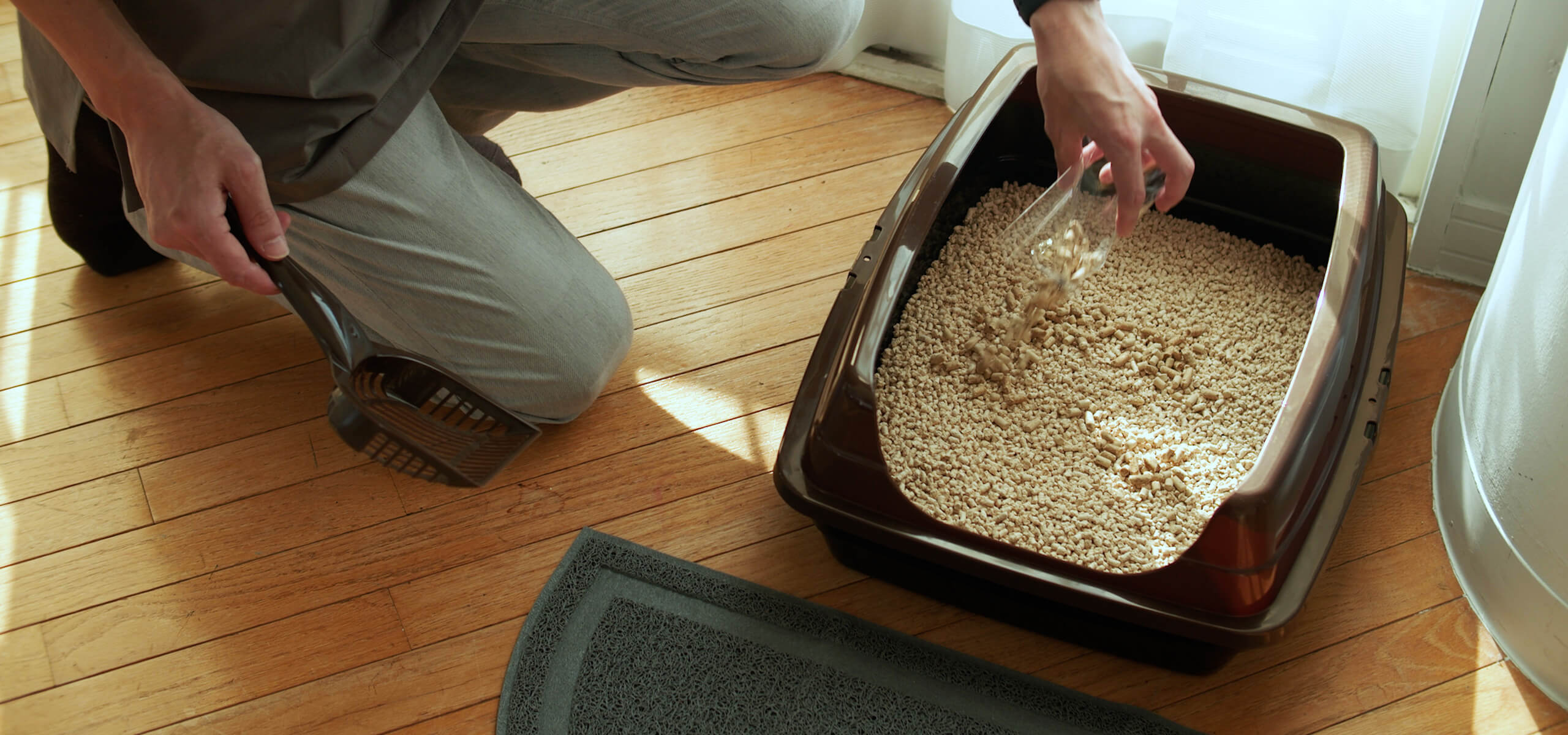
まずはトイレの場所を決めます。部屋の隅など、できるだけ人の通りが少なく静かで、子猫が普段過ごしているエリアから遠すぎない場所がいいでしょう。猫は基本的に寝床や食事をする場所では排泄をしない動物であるため、子猫の食事場所や猫ベッドから少し離れた所に置くのがベストといわれています。しつけがしやすいよう、飼い主さんの目が届きやすい場所であるとさらに良いです。
また、子猫が混乱してしまわないよう、一度トイレの場所を決めたらできるだけ場所を変えないようにすることも大切です。猫砂、布、新聞紙など、子猫自身の排泄物のにおいがついた物をトイレに入れてあげると覚えやすくなるので、ぜひ試してみてください。
2. ソワソワしていたら連れて行く
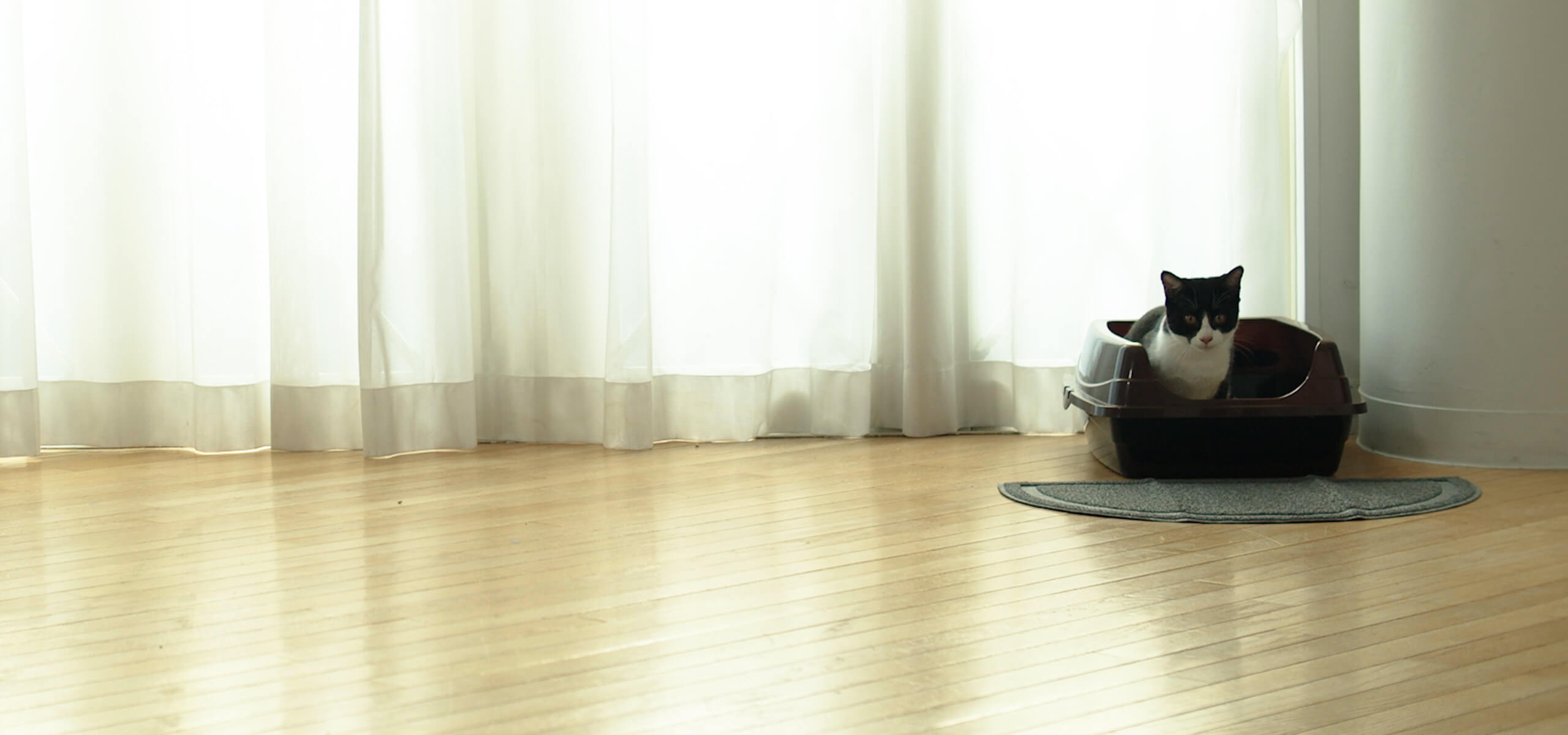
トイレの場所を決めたら、次はトイレトレーニングを開始します。子猫がソワソワと落ち着かない様子を見せたらチャンスです。床のにおいをクンクンとしきりに嗅ぐ、グルグルと動き回る、床を前足でカキカキと掘るようにするといったしぐさを始めたら優しく抱き上げて、そっとトイレに運びます。このとき、子猫が怖がらないよう、強く抱き上げたり、大きな音を出したりしないよう注意しましょう。
また、トイレトレーニングを始めたばかりの頃は、寝起きや食後、お水を飲んだ後、遊んだ後など、わかりやすいトイレサインを示していなくてもトイレに運んであげると、トイレに行く習慣がつきやすいといわれています。
3. 上手にできたらほめてあげる
子猫が上手に排泄できたときは、思いきりほめてあげましょう。おやつなどのご褒美を与えるのもおすすめです。
これらのことを何回も繰り返すことで、「ここが自分のトイレなんだ」「トイレを成功するとほめてもらえる」と子猫が覚えて、スムーズにトイレのしつけをすることができます。
5子猫にトイレをしつけるときの注意点
子猫のトイレのしつけを行うにあたって、どのようなことに注意するべきなのでしょうか。ここでは、代表的な2つの注意点についてご説明します。
トイレの失敗は絶対に叱ってはいけない
子猫がトイレを失敗して粗相をしてしまったとしても、絶対に叱ってはいけません。叱ってしまうと子猫は「排泄したこと」自体がいけないことだと思い込んでしまい、排泄を我慢してしまう場合があります。あるいは、飼い主さんが見えない所で隠れて排泄するようになってしまうこともあります。そうすると、病気のリスクが高まったり、いつまでもトイレを覚えなかったりという事態にもなりかねません。
トイレ環境に問題がないか確認してみる
子猫がトイレ以外の場所で粗相をしても決して叱らず、まずはトイレ環境に問題がないかどうかを確認しましょう。ちょっとした環境を整えてあげるだけでも、子猫のトイレの失敗は解消されるものです。
6子猫がトイレで排泄をしない原因と対処法
子猫がトイレで排泄をしない原因はさまざまです。ここでは、その原因と対処法についてご説明します。
トイレが汚れている
猫は、とてもきれい好きでにおいに敏感な動物です。そのため、汚れているトイレには入りたがりません。このことがトイレ以外の場所で排泄をしてしまったり、我慢したりする原因にもなってしまいます。トイレを我慢してしまうと、便秘や尿路感染症、尿石症、膀胱炎などの泌尿器系の病気のリスクも高まります。
毎日こまめに掃除してあげるのはもちろん、週に1度はトイレの容器を洗い、猫砂をすべて入れ替えるなど、常に清潔な状態を保つようにしましょう。ただし、容器を洗う際は、猫のにおいが完全に消えてしまわないよう注意が必要です。
場所や素材など、トイレの環境に対してストレスを抱えている
トイレの環境にとても敏感なのが、猫という動物の特徴です。そのため、ちょっとしたストレスから、トイレで排泄をしなくなってしまいます。
猫は、敵や邪魔者のいない安心な場所でしか排泄をしません。人の通りが頻繁であったり、ほかのペットに邪魔されたりするなど、落ち着かない所のトイレは使いたがらない動物です。また、大きな音がする場所であると、怖いと感じて嫌がります。猫砂の素材やトイレの容器が気に入らないといったことでもストレスを感じてしまうことも。そんなときは、トイレの場所を見直したり、猫砂を別素材の物で試してみたりするのがおすすめです。
なお、多頭飼いによるほかの猫とのトイレの共有も、ストレスを抱える原因となります。複数の猫が同居しているのであれば、猫の頭数にプラス1つのトイレを用意するのが理想となります。これは子猫が、ほかの猫の排泄物やにおいが残っているトイレを嫌うためです。トイレの数を多めに用意することで、ほかの猫にトイレを汚される可能性がより低くなり、それぞれの猫がきれいなトイレを使えるようになります。
このようにして、子猫が安心できる環境を作ってあげるようにしましょう。
体のどこかに不調がある
子猫の体のどこかに不調があり、体内に病気が隠れているために、トイレができないということも考えられます。
尿路感染症や尿石症、膀胱炎などの泌尿器系の病気や下痢、便秘などにより排泄に痛みが伴うと、「トイレは体が痛くなる所」と認識してしまうことがあるのです。「痛いのは嫌」とトイレに行くことそのものを嫌がったり、トイレにたどり着けずトイレ以外の場所で排泄してしまったりということになりかねません。トイレを清潔にしたりトイレの環境を改善したりしても、子猫のストレスや不安な様子が改善されない場合は、病気を疑い、早めに動物病院にかかるようにしましょう。その際、トイレの回数や1回の排尿量などがわかると診断の手掛かりになります。
7さまざまな場所にマーキングをしてしまう場合の対処法
マーキングは粗相ではなく、スプレーという特別なおしっこでにおいづけをして自分の存在をアピールする子猫の習性です。引越しや新しい猫、家族が増えたなど、大きな環境の変化による縄張りへの不安から、あるいは情緒不安などから気持ちを落ち着けようとするために行うといわれています。発情期の猫がそばにいることで始まることもあります。
スプレーは、普段のおしっこより数十倍濃く少量で、壁などの垂直な場所に向かって行うものです。量やにおい、している場所から、スプレーかどうかはすぐに見分けがつきます。
マーキングを始めるのは、生後5~8ヵ月くらいからです。去勢・避妊手術をしていない猫、特に縄張り意識の強いオスに多くみられます。去勢・避妊手術をすることで、マーキングのほとんどは収まります。ただ、手術後であっても、ほかの猫や知らない人間に出会ったり、そのにおいを嗅いだりすることで、不安を感じてマーキングをしてしまうこともあるでしょう。
マーキングをしたら、その場所やおしっこがかかってしまった物をしっかり拭いて、においを完全に消す必要があります。においが残っていると、同じ場所にまたマーキングをしてしまいます。また、子猫が不安に思うであろう要因は、できるだけ子猫から遠ざけるようにしてあげてください。猫のフェロモン成分が含まれたスプレーや拡散剤を使って猫の不安を取り除くことで、結果としてマーキングの抑制につなげられることがあります。
8子猫のトイレの管理方法
猫は、非常にきれい好きな動物のため、トイレは常にきれいな状態にキープしてあげることが大切です。最低限、1日1回はトイレの掃除をしてあげるようにしましょう。できる限り、気づいたらすぐに片づけるようにすることが大切です。
こまめにトイレ掃除をすることによって、排泄物の異常にいち早く気づき、子猫の体調の変化を知ることができるというメリットもあります。尿の量や回数、便秘・下痢をしていないか、色や形、においなどをよく観察してください。
特に、子猫は下痢に注意が必要です。下痢が続くことによって、脱水症状を起こす危険があるからです。連続して3回以上下痢をしている、1日以上下痢が続くなどの場合は、早めに動物病院に連れて行ってください。
9子猫のトイレを選ぶ際のポイント
子猫のトイレは、ストレスなく気持ち良く排泄できる環境であるかが大切です。加えて、飼い主さんが管理しやすいことも重要といえるでしょう。これらの点を考慮した、子猫のトイレ選びのポイントをご紹介します。

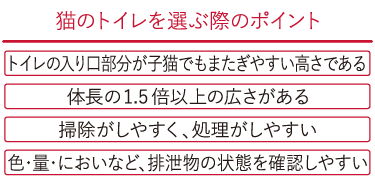
トイレの入り口部分が子猫でもまたぎやすい高さである
子猫の体に合わせて入り口部分がまたぎやすい高さのトイレを選びます。もし、高さが合わないようであれば、上りやすいステップを用意してもいいでしょう。
体長の1.5倍以上の広さがある
トイレの容器の大きさとしては、体長の1.5倍以上の広さが目安となります。猫は、狭いトイレが苦手です。猫の体の大きさに合わせたトイレを選んであげましょう。個体によっては屋根がついているトイレでにおいが充満することを嫌う場合があります。その場合はトレイ状のトイレを使うのがおすすめです。
掃除がしやすく、処理がしやすい
毎日のトイレの掃除が飼い主さんにとって負担とならないよう、掃除や排泄物の処理がしやすいタイプのトイレを選ぶようにしましょう。
色・量・においなど、排泄物の状態を確認しやすい
子猫の体調管理は、毎日行う必要があります。そのため、排泄物の色や量、においを確認しやすいトイレを選ぶことが大切です。
10ペティオおすすめの猫用トイレ関連商品
猫のトイレ用品には、さまざまなタイプがあります。今回は、ペティオが販売する猫用のトイレ商品を2点ご紹介しましょう。
おすすめ商品
-
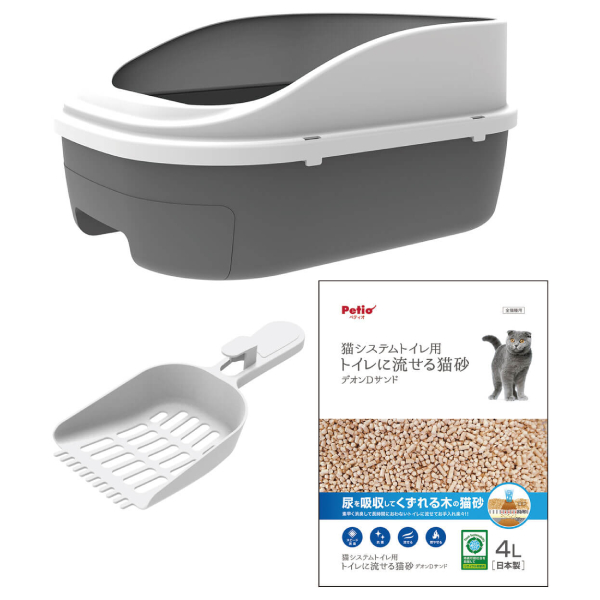 猫システムトイレセットシーツいらずで日々のお手入れが楽チンなシステムトイレ。
猫システムトイレセットシーツいらずで日々のお手入れが楽チンなシステムトイレ。
尿を吸収して崩れた猫砂が下のトレイに落ちるからにニオイが残らない。
下のトレイに溜まった猫砂を捨てて、減った分の猫砂を補充するだけと、お手入れラクラク。 -
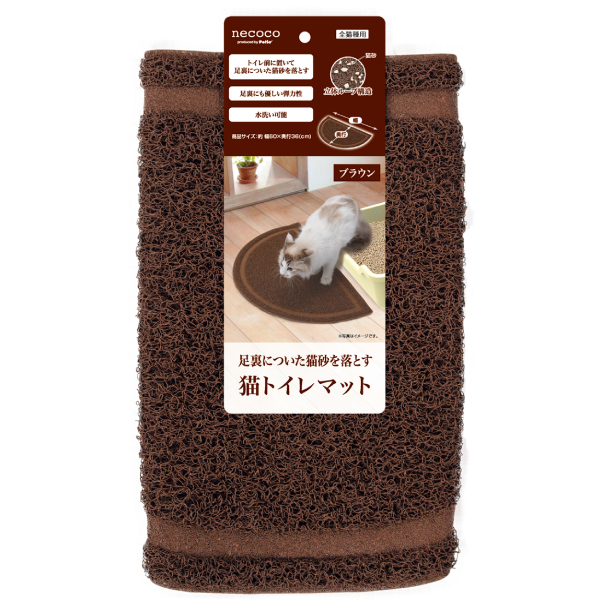 ネココ 猫トイレマット「ネココ 猫トイレマット」は、トイレに入った後の猫の足裏に残った猫砂を、優しく落とすのに便利な猫トイレマットです。立体ループ構造で、猫の足裏にもソフトな弾力性があります。カラーはブラウンとグレーの2色展開で、サイズは約幅60cm×奥行36cmです。猫トイレの前に置いてご使用ください。
ネココ 猫トイレマット「ネココ 猫トイレマット」は、トイレに入った後の猫の足裏に残った猫砂を、優しく落とすのに便利な猫トイレマットです。立体ループ構造で、猫の足裏にもソフトな弾力性があります。カラーはブラウンとグレーの2色展開で、サイズは約幅60cm×奥行36cmです。猫トイレの前に置いてご使用ください。
11子猫のトイレのしつけをきちんと行うことが健康につながる
子猫のトイレのしつけにおいて何より大切なのは、失敗しても叱らないことです。トイレ以外の場所で粗相してしまった場合には、決して叱ることなく、すぐに排泄物のにおいを消してそこがトイレではないことを子猫に覚えさせます。また、落ち着かない環境や不潔なトイレ、使いづらいトイレを子猫は好みません。子猫がトイレにストレスを感じていないかどうか、普段から子猫をよく観察しておくことが重要です。
子猫のトイレのしつけは、猫との暮らしの第一歩。子猫がストレスなく快適に過ごせるよう、ゆっくり焦らずトイレのしつけを行い、毎日のトイレ習慣を通じて子猫の健康管理を行うようにしましょう。
12
よくある質問
子猫のトイレQ&A
- 子猫にトイレのしつけをスタートする時期は?
-
子猫が自分で排泄ができるようになるのは、生後3~4週間後くらいの時期となりますので、この頃からトイレのしつけをスタートするのがいいでしょう。生まれてすぐの子猫は自発的に排泄をすることができないため、お母さん猫がいない場合は、飼い主さんがティッシュなどでお尻を刺激してあげて排泄を促してあげるのもいいです。
- 子猫がトイレで排泄をしない原因は?
-
子猫がトイレで排泄をしない原因はさまざまですが、トイレが汚れていたり、場所や素材など、トイレの環境に対してストレスを抱えている可能性があります。その他にも子猫の体のどこかに不調があり、体内に病気が隠れているために、トイレができないということも考えられます。
- 子猫にトイレをしつけるときの注意点は?
-
子猫がトイレを失敗して粗相をしてしまったとしても、絶対に叱ってはいけません。叱ってしまうと子猫は「排泄したこと」自体がいけないことだと思い込んでしまい、排泄を我慢してしまう場合があります。子猫がトイレ以外の場所で粗相をしても決して叱らず、まずはトイレ環境に問題がないかどうかを確認しましょう。


